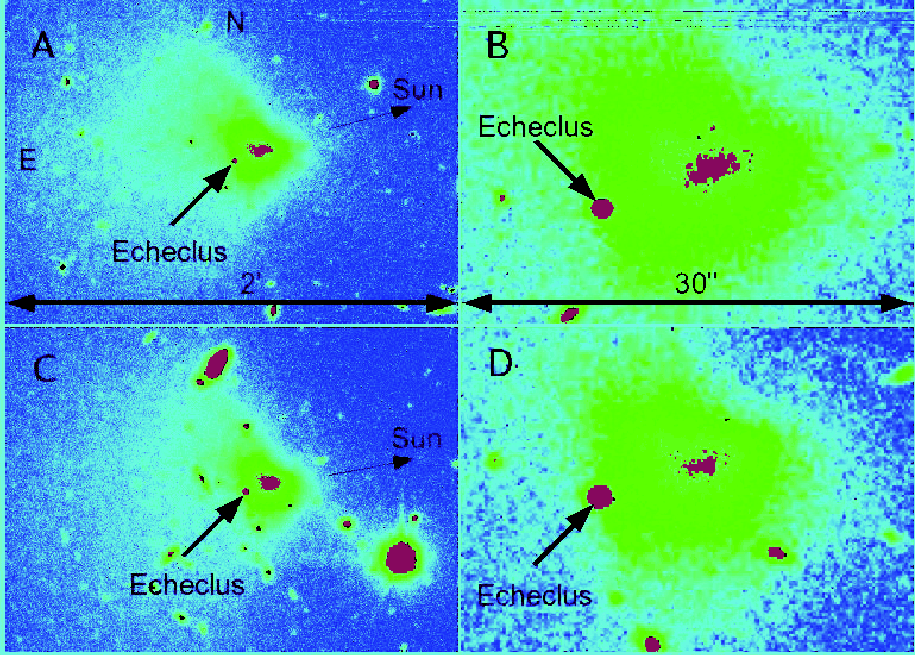Echeclus, a Centaur averaging 10.7 AU from the Sun, has demonstrated comet-like behavior over the past two decades as it reached its perihelion distance of 5.8 AU in April 2015. From 2005 through 2017, ground based telescopes observed a coma in the vicinity of Echeclus. Shown below are Images of Echeclus and its coma taken by P. Rousselot in March 2006 using the ¸8.2-m ESO Very Large Telescope and FORS 1 instrument.

This week, RECON has the opportunity to make follow up observations regarding whether any cometary behavior remains. At a distance of 10.2 AU from Earth, the Centaur will be passing in front of an extremely bright magnitude 9.9 star at 08:35 UTC on January 6, 2022, this coming Wednesday night/Thursday morning. Every observing site that is able to record data will help to probe whether there is any cometary gas remaining in the neighborhood of the object thanks to the unusually bright star! The rapid frame rate we can collect will be good for detecting small yet dense structures. By adding all the data together we can put more sensitive limits on the properties of any material near Echeclus. The more sites we have, the more sensitive our limits will be. It is very unlikely that we will have another opportunity to repeat this particular observation so the best of luck to everyone.
For more information on this occultation opportunity, visit the Event Page for (60558) Echeclus.
